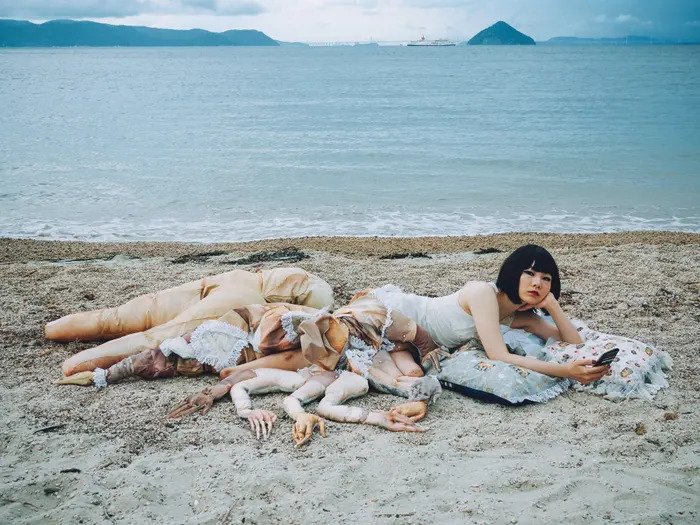Mari Katayama was born with tibial hemimelia, a condition in which children are born with a tibia, i.e. shinbone, shorter than usual or missing. The condition is extremely rare (1 out of every 1 million births) (via). In Katayama's case, tibial heminelia caused club feet and a cleft left hand resembling a crab's pincers, which is also the very reason why crab motifs are often part of her work (via).
“You can’t separate my body from my work. But I’m not making art out of my disabilities.”
Mari Katayama
“I think everyone is lucky whether they realize it or not. No matter what kind of body we are born with, the fact that we are living in this world is lucky. We are here, we can feel, we can cook, we can eat, we can think; I think that’s a great thing.”
Mari Katayama
“All human bodies – including ones like mine that have been altered by human hands – are perfect.”
Mari Katayama
At the time I decided to get my legs amputated, it didn’t seem like such a big decision. I just wanted to wear the same shoes as everyone else. When my legs were amputated, I think I understood that actually I would never be able to be like everyone else.
Mari Katayama
As a child, Katayama used to wear special shoes that were buckled to her legs with braces. Hence, it was not possible to wear regular clothes. Three generations - her great grandmother, her grandmother and her mother - were constantly sewing clothes for her and encouraged her to create her own ones. "Sewing became second nature." There was the choice between a) being bound to the wheelchair for the rest of her life but keeping her legs and b) being able to walk but losing her legs. At the age of nine, Katayama decided to have both lower legs amputated: "I chose to walk." (via)
[Prosthetics has] been the hardest part of my life. Some people say that wearing a prosthesis is part of the body, but for me, it feels like wearing a very heavy boot. I hate prostheses, but I can’t live without them, And I can’t function in society without them either. I’ve recently come to realize that I need to build my own body in order to utilize this electronic prosthesis. I’ve begun to enjoy it, as the more I work at it, the nicer my gait becomes.
Mari Katayama
The amputation also meant that she could wear regular clothes which again sparked her interest in fashion, "hoping she could fit in by dressing like other kids. But the bullying continued." A teacher of hers suggested that perhaps she was bullied because she had provoked others by looking at them arrogantly (via).
At 16, she modelled for the graduation show of a fashion student and tattooed her prosthetic legs. Katayama thought this statement would be a welcome one and that she would make friends with others. However...
“It made the situation worse,” she says. “Nobody wanted to have anything to do with me.” She had, however, hit upon a way of expressing herself. “It made me realise that words and gestures weren’t the only way to communicate.” Inspired by punk, she dyed her hair green and shaved off her eyebrows. “It was my way of saying, ‘Leave me alone.’” (via)
When asked what the most memorable thing she did to rebel, Katayama replies:
Having a daughter. Everyone was against it. Not that I had a child to rebel, of course. But in my life so far, even compared to becoming an artist, giving birth was the thing that most people were against.
Mari Katayama



























Very wow!
ReplyDeleteYes, everything about the photographs is wow.
DeleteBeautiful and brutal at the same time.
ReplyDeleteA few days ago, I went to see her exhibition (her work is currently exhibited in Vienna) - really impressive.
Delete